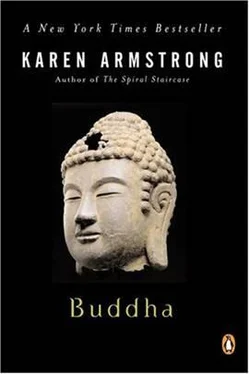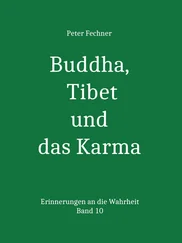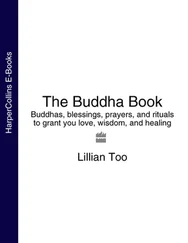“Come, Kalamans,” he said, “do not be satisfied with hearsay or taking truth on trust.” People must make up their own minds on questions of morality. Was greed, for example, good or bad? “Bad, Lord,” the Kalamans replied. Had they noticed that when somebody is consumed by desire and determined to get what he wants, that he is likely to kill, steal or lie? Yes, the Kalamans had observed this. And did not this type of behavior make the selfish person unpopular and, therefore, unhappy? And what about hatred, or clinging to what were obviously delusions instead of trying to see things as they really were? Did not these emotions all lead to pain and suffering? Step by step, he asked the Kalamans to draw upon their own experience and perceive the effect of the “three fires” of greed, hatred and ignorance. By the end of their discussion, the Kalamans found that in fact they had known the Buddha’s Dhamma already. “That is why I told you not to rely on any teacher,” the Buddha concluded. “When you know in yourselves that these things are ‘helpful’ ( kusala ) and those ‘unhelpful’ ( akusala ) , then you should practice this ethic and stick to it, whatever anybody else tells you.”
He had also convinced the Kalamans that while they should avoid greed, hatred and delusion, it would also obviously be beneficial to practice the opposite virtues: “non-greed, non-hatred and non-delusion.” If they cultivated benevolence, kindness and generosity, and tried to acquire a sound understanding of life, they would find that they were happier people. If there was another life to come (the Buddha did not impose the doctrine of reincarnation upon the Kalamans, who might not have been familiar with it), then this good kamma might get them reborn as gods in heaven next time. If there was no other world, then this considerate and genial lifestyle might encourage others to behave in like manner toward themselves. At the very least, they would know that they had behaved well-and that was always a comfort. To help the Kalamans build up this “skillful” mentality, the Buddha taught them a meditative technique that was a lay person’s version of the “immeasurables.” First they must try to rid their minds of envy, feelings of ill will and delusion. Then they should direct feelings of loving-kindness in every direction. As they did so, they would experience an enhanced, enlarged existence. They would find that they were imbued with “abundant, exalted, measureless loving-kindness”; they would break out of the confines of their own limited viewpoint and embrace the whole world. They would transcend the pettiness of egotism and, for a moment, experience an ecstasy that took them out of themselves, “above, below, around and everywhere,” and would feel their hearts expand with disinterested equanimity. Laymen and -women might not be able to attain the permanence of Nibbana, but they could have intimations of that final release.
The Buddha was, therefore, teaching monks and lay folk alike a compassionate offensive to mitigate the egotism that prevailed in the aggressive new society and that debarred human beings from the sacred dimension of life. The skillful state that he was trying to promote is well expressed in this poem in the Pali Canon:
Let all beings be happy! Weak or strong, of high, middle or low estate,
small or great, visible or invisible, near or far away, alive or still to be born-may they all be entirely happy!
Let nobody lie to anybody or despise any single being anywhere.
May nobody wish harm to any single creature, out of anger or hatred!
Let us cherish all creatures, as a mother her only child!
May our loving thoughts fill the whole world, above, below, across
-without limit; a boundless goodwill toward the whole world,
unrestricted , free of hatred and enmity!
A lay person who achieved this attitude would have advanced a long way along the spiritual path.
The scriptures do give us a few examples of lay disciples who practiced meditation outside the Sangha and reached Nibbana, but these solitary virtuosi were the exception rather than the rule. It was thought that an Arahant could not continue to live the life of a householder: after achieving enlightenment, he would either join the Sangha immediately or he would die. This, apparently, is what happened to Suddhodana, the Buddha’s father, who attained Nibbana in the fifth year of his son’s teaching mission and died the next day. When the Buddha heard the news, he returned to Kapilavatthu and stayed for a while in Nigrodha Park. This event led to a new development in the Sangha, which, it seems, the Buddha did not initially welcome.
While he was living in the Nigrodha arama, the Buddha was visited by his father’s widow, Pajapati Gotami: she was also the Buddha’s aunt, and had become his foster-mother after the death of his own mother. Since she was now free, she told her nephew, she wanted to be ordained in the Sangha. The Buddha adamantly refused. There was no question of admitting women to the Order. He would not change his mind, even though Pajapati begged him three times to reconsider and she left his presence very sadly. A few days later, the Buddha set out for Vesali, the capital of the republic of Videha on the northern bank of the Ganges. He often stayed in the arama there, which had a hall with a high-gabled roof. One morning, Ananda was horrified to find Pajapati sobbing on the porch with a crowd of other Sakyan women. She had cut off her hair, put on the yellow robe and had walked all the way from Kapilavatthu. Her feet were swollen, and she was filthy and exhausted. “Gotami,” cried Ananda; “What are you doing here in such a state? And why are you crying?” “Because the Blessed One will not have women in the Sangha,” Pajapati replied. Ananda was concerned. “Wait here,” he said, “I will ask the Tathagata about this.”
But the Buddha still refused to consider the matter. This was a serious moment. If he continued to bar women from the Sangha, it meant that he considered that half of the human race was ineligible for enlightenment. But the Dhamma was supposed to be for everybody: for gods, animals, robbers, men of all castes-were women alone to be excluded? Was rebirth as a man the best they could hope for? Ananda tried another tack. “Lord,” he asked, “are women capable of becoming ‘stream-enterers’ and, eventually, Arahants?” “They are, Ananda,” the Buddha replied. “Then surely it would be a good thing to ordain Pajapati,” Ananda pleaded, and reminded his master of her kindness to him after his mother had died. The Buddha reluctantly conceded defeat. Pajapati could enter the Sangha if she accepted eight strict rules. These provisions made it clear that the nuns ( bhikkhunls ) were an inferior breed. A nun must always stand when in the presence of a male bhikkhu, even one who was young or newly ordained; nuns must always spend the vassa retreat in an arama with male monks, not by themselves; they must receive instruction from a bhikkhu once every fortnight; they could not hold their own ceremonies; a nun who had committed a grave offense must do penance before the monks as well as the bhikkhunls; a nun must request ordination from both the male and the female Sangha; she must never rebuke a bhikkhu, though any monk could rebuke her; nor could she preach to bhikkhus. Pajapati gladly accepted these regulations and was duly ordained, but the Buddha was still uneasy. If women had not been admitted, he told Ananda, the Dhamma would have been practiced for a thousand years; now it would last a mere five hundred years. A tribe with too many women would become vulnerable and be destroyed; similarly, no Sangha with women members could last long. They would fall upon the Order like mildew on a field of rice.
Читать дальше












